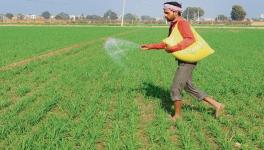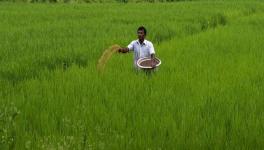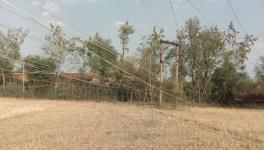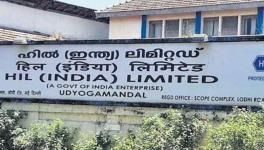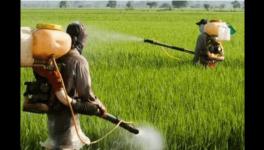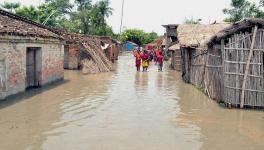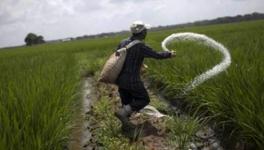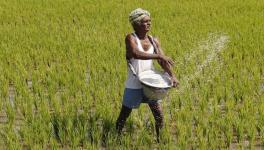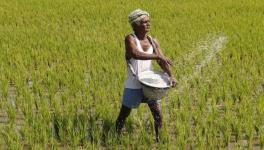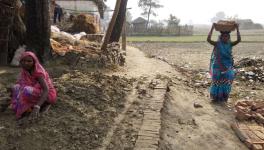DAP Shortage a Symptom of Larger Food Planning Crisis
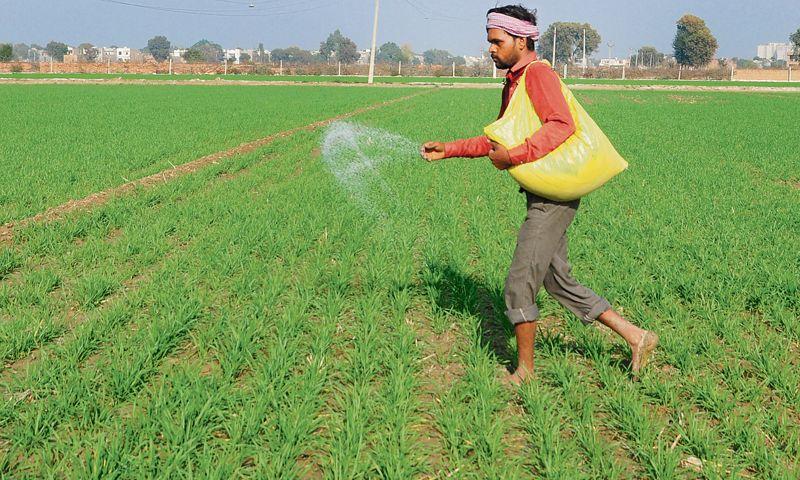
Representational Image. Image Courtesy: Tribune India
As 15 November approaches, the time for most farmers to sow their crops across the country is running out. If the Rabi crop is not planted before mid-November, a bad harvest awaits them in April. But what is the problem, why cant’t farmers sow the winter crop?
The answer lies in di-ammonium phosphate (DAP), a chemical fertiliser extensively used during sowing. Reports from across India, but mainly from Punjab, Rajasthan and Haryana, confirm that there is a growing shortage of DAP. For example, Rajasthan got less than 50% of its required DAP till early November. This put farmers in a tense spot. Many of them spent Diwali night queued up outside co-operative societies, trying to get their hands on DAP. Madhya Pradesh, which is a BJP-ruled state and the home state of agriculture minister Narendra Singh Tomar, reported a shortage too.
The situation is getting out of hand as farmers are agitating against this shortage across the country. In various places, farmers have gheraoed (occupied) state agriculture minister’s residences, blocked roads and even pelted stones once the police tried to violently remove them. There were instances of DAP looting reported from Haryana and Madhya Pradesh. Stockists tend to hang on to supplies when there are shortages, and this is what has prompted the raids on DAP suppliers. Farmers have committed suicide or died of exhaustion due to the non-availability of this crucial chemical. One farmer suffered a heart attack and died while waiting in line for DAP.
This scenario has birthed a sellers’ market, where farmers have no choice but to pay well above the Rs. 1,200 MRP for even inferior quality of DAP. Black-marketing and hoarding have also began. Various government officials have warned against unfair business practices, but the bootomline is that the farmers woes have not reduced. Farmers have even resorted to using more expensive NPK fertilisers to substitute DAP, which substantially increases their input costs.
Political parties have lent support to the farmers and some even called the shortage a “conspiracy”, demanding DAP supplies be released immediately. Farmer leaders such as Joginder Singh Ugrahan of the BKU, have spoken out, calling the price rise a result of corporate manipulation. Others have also seen the shortage in Punjab and Haryana as politically motivated.
The government response strategy has been raids, strong media statements and more allocations to state quotas. But how did we come to this shortage? Since the Green Revolution, DAP is as vital as crude oil for the country, as without DAP, chemical agriculture does not work efficiently.
Currently, our government’s policy is to provide a per-kilo subsidy to companies—both public and private.
Since the Kharif season, DAP prices have been soaring in the international markets. It touched US $700 per ton in September 2021, a record high if we compare it to September 2020, when the price was $434 a ton. The Indian government announced additional subsidies to support companies bringing DAP to India, but constant price fluctuation has upset the government's planing. Even larger companies like IFFCO have raised prices and invited farmers’ ire. India’s face-off with China is not working well for farmers eithers, as restrictions on trading are hampering Chinese DAP from reaching India. Keep in mind, China is one of the biggest producer of fertiliser in the world.
But other preventible mistakes were also made. First is involving government-to-government trade deals on DAP, phosphate and phosphoric acid. The government is responsible, and the biggest share of the blame lies with the fertiliser ministry’s bureaucracy. The management of this strategic reserve should have been mapped out in earlier action plans. The scenario today is not just bad policy but inefficient planning.
When we speak of solutions, bilateral agreements need to be have been made not with companies but with other governments, such as of Canada, Russia, China, several countries in Africa, and so on, for an unhindered supply of fertiliser or its raw minerals. India already has approached gulf countries and invested in production of urea, etc. This model needs to be implemented properly because DAP in chemical agriculture is equivalent to fuel in transportation.
Strategic investment also needs to be made in DAP plants at home and abroad. Preferably, this should be done by the public sector, but now, keeping the urgency in mind, Indian private companies will have to be encouraged to invest too. Our DAP requirements are predictable, and so, different plants and imports should be linked with specific regions, with contingency plans in place. India will have to gamble and send out mineral surveys in regions with potential reserves to ensure we our food sovereignty is not shaken up. Over time, we need to shift out of chemical agriculture and rely on perfecting ecologically sounds, less-input dependent methods of farming and seed varieties.
This issue needs to be addressed sooner than later as, currently, there are only limited reserves of rock phosphate, which are expected to run out by 2060. There is an immediate need to find novel fertilisers, because the production of DAP and NPK fertilisers will not be possible without this resource. So, chemical agriculture may be in need of innovation, quickly.
Farmers have also a role in this, too. They need to ensure that fertilisers are not wasted by over-use. India has some of the most skewed fertiliser use ratios. Many of the Green Revolution zones such as Punjab, Haryana, and western Uttar Pradesh report rampant fertiliser use. Most of this fertiliser runs off into rivers and ground water, as soils have lost their retention and productive capacities. If more farmers shift to organic or ecological farming, we can help ameliorate this problem.
Should urban consumers be concerned about what seems to be a fuss in rural India? Yes, because inadequate DAP will affect crops yields. No DAP, inadequate DAP, or inferior quality DAP can have a significant impact on farm outputs. Mustard, potatoes, wheat, legumes, etc., are some major Rabi crops, and we may see their rising prices hit us soon, too. Prices of oilseeds and mustard are already very high and rising, and any further escalation will push healthy oils beyond the reach of many households. Punjab and Haryana, wheat-growing states, also consume DAP in large quantities. The more the delay, the greater the losses to farmers, as even the cost of labour for sowing rises with the delays. And the nation suffers when the farmers suffer.
The author is an independent policy analyst and writer on agriculture and the environment. The views are personal.
Get the latest reports & analysis with people's perspective on Protests, movements & deep analytical videos, discussions of the current affairs in your Telegram app. Subscribe to NewsClick's Telegram channel & get Real-Time updates on stories, as they get published on our website.









